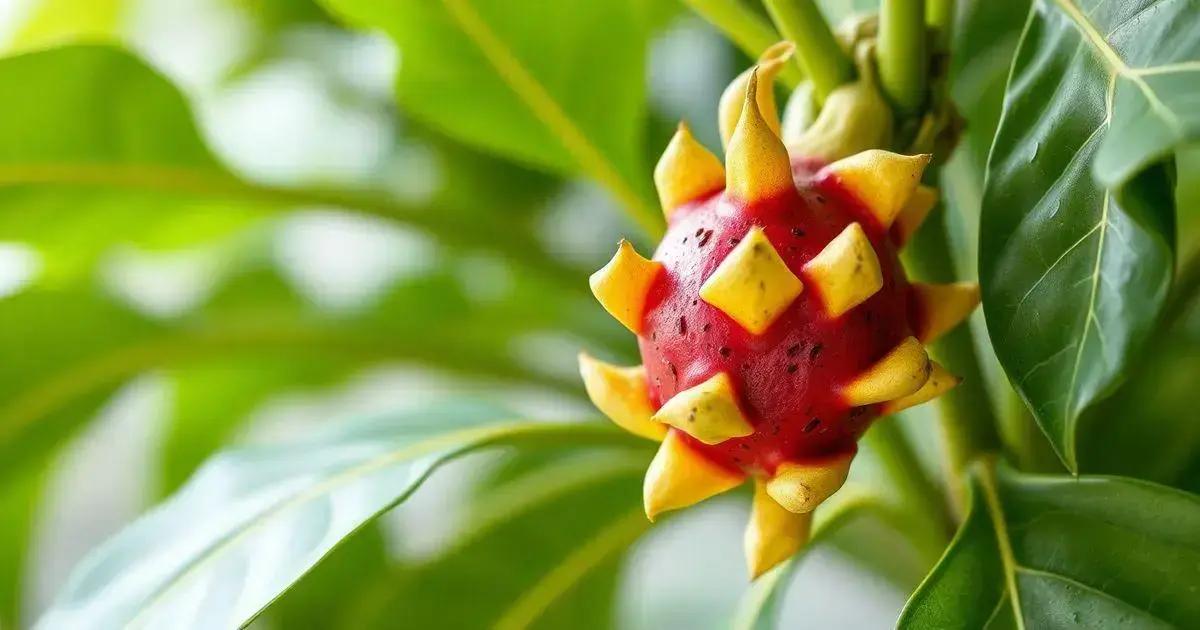How to Take Care of Dragon Fruit Plant: 5 Expert Tips for Success
How to take care of dragon fruit plant can be an exciting journey for any gardening enthusiast. As you embark on this adventure, understanding the essentials of nurturing these unique cacti will pave the way for a fruitful harvest. Let’s explore the vital aspects that contribute to the success of your dragon fruit gardening experience.
Table of Contents
ToggleEssential soil requirements for thriving dragon fruit plants
Essential soil requirements for thriving dragon fruit plants include specific conditions that cater to their growth. The right soil mixture is crucial for the healthy development of these unique cacti. Below are the critical soil characteristics to consider:
- Well-draining: Dragon fruit plants thrive in soil that allows excess water to drain quickly, minimizing the risk of root rot.
- Poor to moderate fertility: While dragon fruit can tolerate nutrient-poor soils, enriching the mix with organic matter can enhance growth.
- Slightly acidic to neutral pH: A pH of 6.0 to 7.0 is ideal for optimal nutrient absorption.
To achieve the perfect soil mix for your dragon fruit, consider this easy-to-follow recipe:
- Mix equal parts of cactus soil or potting mix with perlite and coarse sand.
- Add a handful of compost or well-rotted manure for a nutrient boost.
Using this blend guarantees that your dragon fruit will have the necessary drainage and nutrients for thriving growth.
Another beneficial tip is to perform routine soil testing to ensure the pH and nutrient levels remain balanced. You can use home testing kits to simplify this process.
For more information on techniques for successful planting, check out exploring indoor gardening techniques.
Common Questions About Soil Requirements
- Can I use regular potting soil? Regular potting soil can retain too much moisture, leading to potential root issues. It is better to create a specialized mix.
- What should I avoid in my soil? Avoid soils that retain water or have high clay content, as these conditions can lead to root rot.
By understanding the essential soil requirements for thriving dragon fruit plants, you’ll set the foundation for a robust and fruitful gardening journey!
Understanding dragon fruit watering needs for optimal growth

Understanding dragon fruit watering needs for optimal growth is essential for fostering healthy plants. These unique cacti thrive in dry conditions but require careful attention when it comes to their watering schedule. To ensure you are meeting their hydration needs effectively, consider these essential tips:
Ideal watering schedule
- Water deeply but infrequently, allowing the soil to dry out completely between waterings.
- During the growing season (spring to fall), water approximately every 1-2 weeks.
- In the dormant season (winter), reduce watering to once every 3-4 weeks.
Signs of overwatering
Detecting overwatering is crucial. Watch for the following signs:
- Yellow leaves or soft, mushy stems.
- Moldy soil surface or unwanted growth in the pot.
- Foul odor from the soil, indicating root rot.
Watering techniques
Implement these proven watering techniques to avoid pitfalls:
- Use a drip irrigation system for consistent moisture control.
- Water in the early morning to reduce evaporation.
- Avoid wetting leaves, as this can lead to fungal diseases.
For an in-depth look at best practices in gardening, consider exploring indoor gardening techniques.
Common questions about watering dragon fruit
- How do I know when to water my dragon fruit? Stick your finger into the soil; if it feels dry up to the first knuckle, it’s time to water.
- Can dragon fruit survive with minimal water? Yes, dragon fruit plants are drought-resistant, but they still need consistent attention to thrive.
By mastering the adventure of understanding dragon fruit watering needs for optimal growth, you’ll pave the way for a successful gardening experience!
Common pests and diseases affecting dragon fruit cultivation
Common pests and diseases affecting dragon fruit cultivation can pose significant challenges for growers. Understanding these threats is essential for maintaining healthy plants and achieving fruitful harvests. Here’s a closer look at the most prevalent pests and diseases:
Common pests
- Mealybugs: These pests suck sap from the plant and can lead to stunted growth.
- Spider mites: Tiny and often unnoticed, they can cause leaf discoloration and webbing.
- Scale insects: These pests create hard, protective shells, making them difficult to remove and potentially causing damage to stems.
Common diseases
Dragon fruit plants are also susceptible to several diseases:
- Root rot: Typically caused by overwatering and poorly draining soil. Signs include yellowing and wilting.
- Fungal infections: Such as powdery mildew, which can appear as white spots on leaves.
- Botrytis blight: A fungal disease often triggered by high humidity, leading to brown, mushy spots on fruit and leaves.
Preventive measures
Taking proactive steps to protect your plants from these pests and diseases can make a significant difference:
- Maintain good air circulation around the plants to reduce humidity levels.
- Inspect plants regularly for early signs of pests or disease.
- Use insecticidal soap or neem oil to control pest populations organically.
For further insights into effective gardening practices, check out exploring indoor gardening techniques.
Common questions about pests and diseases
- How can I tell if my dragon fruit plant has pests? Check for visible insects or discoloration on leaves as key indicators.
- What should I do if I find a disease? Remove affected parts of the plant and treat with appropriate fungicides or pest control methods.
By knowing the common pests and diseases affecting dragon fruit cultivation, you can act quickly and ensure a thriving garden!
In conclusion
Taking care of dragon fruit plants encompasses various elements, including understanding soil requirements, watering needs, and managing pests and diseases. By implementing the tips discussed, you can create a thriving environment for your dragon fruit and enjoy a bountiful harvest. For further insights and tips on enhancing your indoor garden, be sure to explore comprehensive gardening resources.

